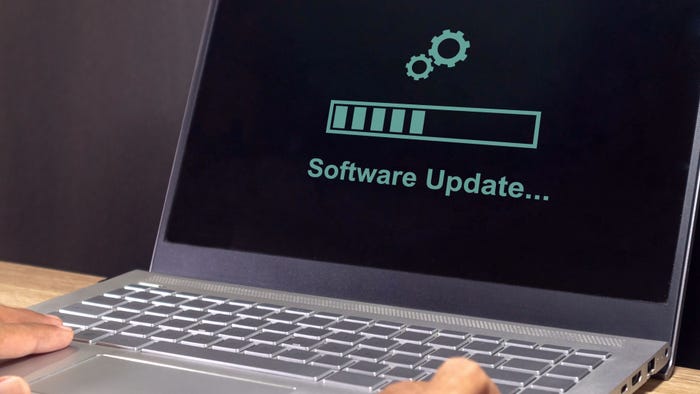The Votes Are In: Election Security Matters
Three ways to make sure that Election Day tallies are true.

No matter what side of the political divide on which one falls, everyone agrees that the security and integrity of elections are critical. Throughout history, foreign adversaries have attempted to influence election outcomes to their benefit and, in 2016, the efforts escalated to cyberattacks. For this reason, the security of US elections and election infrastructure remains a top national concern, and in early 2017, the government designated the election system as one of our critical infrastructures. With the number of cyberattacks growing every day, improving cybersecurity will be a mandatory component in preserving our political process.
The US Department of Homeland Security (DHS) confirmed that at least 21 states have had their networks scanned by Russian adversaries. Scanning is the cyber equivalent of checking for holes in a fence, an unlocked door, or an open window. There are also confirmed reports of a few specific intrusions into government-owned voter registration databases.
The recent FBI indictments validate an organized cyberattack campaign that targeted political organizations, specifically the Democratic Congressional Campaign Committee and the Democratic National Committee. Not surprisingly, this attack began with spearphishing that resulted in network access, the planting of malware, lateral movement, and the exfiltration of sensitive data.
Federal, state, and local governments are responding with initiatives to improve the security of election infrastructure. Earlier this year, the federal government approved $380 million to be used by the states to improve election security. Currently, more than 20 states have requested access to funds and this should increase as we approach the 2018 midterm elections. The funds are being used to improve voter registration databases, election management systems, electronic voting machines, and election night reporting systems.
Ways to Improve Election Infrastructure Security
Election infrastructure is a complex web of systems and networks that involves more than 8,000 entities with resources distributed across both state and local governments. Notably, election infrastructure is not just the systems that support the actual election process but also includes the operations of candidates and campaigns. Improving election infrastructure security requires a combination of a renewed focus on basic cyber hygiene, as well as the strategic use of advanced security technologies, threat intelligence, and information sharing.
1. Revisiting Basic Cyber Hygiene
Whether we are talking about election infrastructure or corporate IT infrastructure, organizations often don't focus enough on cyber hygiene. Just focusing on the basics, which include hardening systems, ensuring proper access controls, and conducting security awareness training to mitigate the risk of users clicking on malicious links, can strengthen security posture. (Yes, John Podesta — we're talking about you!)
State and local governments can take advantage of complimentary DHS services when testing their election infrastructure, which include cyber hygiene scans on Internet-facing systems and risk and vulnerability assessments.
2. Deploying Next-Generation Cyber Technologies
Cybersecurity is an ongoing race between attackers and defenders. Therefore, it's critical that organizations incorporate more contemporary and advanced security technologies into cyber defense efforts.
Current systems are overwhelmed, and hackers have been able to fly under the radar through encrypted communications such as Secure Sockets Layer. Utilizing next-generation security solutions is another way to increase election infrastructure security. It is no longer good enough to solely rely on firewalls and intrusion detection and prevention systems to protect our political system.
3. Using and Sharing Threat Intelligence
Threat intelligence and information sharing has become a critical element of cyber frameworks like the NIST Cybersecurity Framework. With election infrastructure spread across federal, state, and local government, it is imperative that these organizations not only use but also share threat intelligence.
The good news is there is a significant amount of organized threat intelligence and intelligence-sharing efforts that can be leveraged to improve election infrastructure security. Organizations such as DHS and the FBI are valuable partners in these efforts.
There is also the Multi-State Information Sharing & Analysis Center (MS-ISAC), whose stated mission is "to improve the overall cybersecurity posture of the nation's state, local, tribal and territorial governments through focused cyber prevention, protection, response, and recovery." MS-ISAC serves as a central hub for members to access, contribute, and exchange threat intelligence. Earlier this year, MS-ISAC formed the Elections Infrastructure ISAC (EI-ISAC) to specifically support the needs of election infrastructure. EI-ISAC provides members sector-specific threat intelligence products, incident response and remediation, threat and vulnerability monitoring, cybersecurity awareness, and training products.
Thinking Ahead
To ensure our electoral system is protected for years to come, federal, state, and local governments have significantly increased investments in election infrastructure security. While no one thing will solve this problem overnight, by revisiting basic security hygiene, deploying next-generation technologies, and using, sharing, and acting on threat intelligence, we will begin to move forward in mitigating the massive amount of cyber-risk that currently threatens our election system.
Related Content:

Learn from the industry's most knowledgeable CISOs and IT security experts in a setting that is conducive to interaction and conversation. Early-bird rate ends August 31. Click for more info.
About the Author
You May Also Like



_Daniren_Alamy.jpg?width=700&auto=webp&quality=80&disable=upscale)
